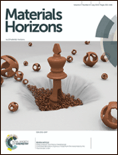
Materials Horizons
Scope & Guideline
Shaping the Future of Materials with High-Impact Research
Introduction
Aims and Scopes
- Novel Materials Development:
The journal emphasizes the creation and exploration of new materials, including organic, inorganic, and hybrid systems, that possess unique properties suitable for various applications. - Interdisciplinary Research:
Materials Horizons encourages interdisciplinary approaches, integrating principles from physics, chemistry, and engineering to tackle complex materials challenges. - Advanced Characterization Techniques:
Research published in the journal often employs cutting-edge characterization methods to understand material properties at the atomic and molecular levels. - Sustainability and Environmental Impact:
The journal highlights studies focused on the development of sustainable materials and processes aimed at reducing environmental impacts. - Functional Applications:
There is a strong focus on the practical applications of materials in electronics, photonics, energy storage, and biomedical fields, emphasizing their real-world impact. - Smart and Responsive Materials:
Research on materials that exhibit smart behaviors, such as stimuli responsiveness and self-healing capabilities, is prominently featured. - Nanotechnology:
The journal covers advancements in nanomaterials and nanocomposites, including their synthesis, properties, and applications.
Trending and Emerging
- Sustainable and Green Materials:
There is a growing emphasis on the development of materials that are environmentally friendly, including biodegradable polymers and recyclable materials, reflecting a collective shift towards sustainability. - Smart and Adaptive Materials:
Research into materials that respond dynamically to environmental stimuli—such as temperature, light, and moisture—has become increasingly prominent, paving the way for innovations in smart textiles and responsive devices. - Nanomaterials and Nanocomposites:
The exploration of nanomaterials continues to expand, particularly in their applications for energy storage, catalysis, and biomedical devices, highlighting their versatility and importance. - 2D Materials and Heterostructures:
There is a surge in research focused on two-dimensional materials, such as graphene and transition metal dichalcogenides, particularly in their applications for electronics, photonics, and energy devices. - Machine Learning in Materials Science:
The integration of machine learning techniques for materials discovery and optimization is a rapidly emerging area, reflecting the industry's shift towards data-driven research methodologies. - Biomaterials and Bioinspired Design:
A trend towards materials that mimic biological systems or are derived from natural sources is evident, particularly in the fields of tissue engineering and regenerative medicine. - Electrochemical Energy Storage:
Research into advanced battery technologies and supercapacitors, particularly those utilizing novel materials for improved performance and sustainability, is a key focus area.
Declining or Waning
- Conventional Energy Materials:
There has been a noticeable decrease in publications focused on traditional energy materials such as bulk metals and alloys, as research increasingly shifts towards innovative, high-performance alternatives. - Basic Polymer Studies:
The journal has seen fewer submissions related to fundamental studies of conventional polymers, as the focus has moved towards functionalized or hybrid materials with enhanced properties. - Static Materials Characterization:
Research centered on static characterization techniques without novel applications has waned, with a stronger emphasis now on dynamic and real-time characterization methods. - Traditional Coatings and Composites:
Interest in conventional polymer coatings and composites is declining, as researchers explore more advanced, multifunctional coatings and composites with enhanced properties. - Historical Material Studies:
Papers focused on historical analyses of materials or traditional materials science education topics are less common, as the field pushes towards innovative and forward-thinking research.
Similar Journals
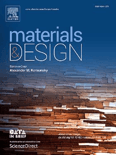
MATERIALS & DESIGN
Shaping Tomorrow's Technologies Through DesignMATERIALS & DESIGN is an esteemed academic journal published by Elsevier Science Ltd, distinguished in the fields of Materials Science, Mechanical Engineering, and Mechanics of Materials. With a robust impact factor and ranking in the top quartiles for 2023, it stands as a leading source for cutting-edge research in these disciplines, occupying ranks of #24 in Mechanical Engineering, #19 in Mechanics of Materials, and #45 in General Materials Science according to Scopus metrics. With an open access policy established in 2019, MATERIALS & DESIGN facilitates the broad dissemination of knowledge, promoting collaboration and innovation among researchers, professionals, and students alike. The journal covers a diverse array of topics, providing vital insights into materials and design methodologies that foster advancements in technology and engineering. Operating from the Netherlands, MATERIALS & DESIGN continues to be a pivotal platform for transformative research, encouraging contributions that drive the future of material design and engineering.
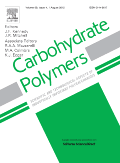
Carbohydrate Polymers
Fostering collaboration in polymer research.Carbohydrate Polymers is a prestigious academic journal, published by ELSEVIER SCI LTD, that plays a vital role in the field of materials chemistry, organic chemistry, and polymer science. With its Q1 category rankings in these domains, this journal serves as a critical platform for disseminating high-quality research, innovative methodologies, and significant advancements in carbohydrate-based polymers. Since its inception in 1981 and continuing until 2025, it has fostered critical discussions and collaborations among researchers, professionals, and students worldwide. Although it does not offer open access, its rigorous peer-review process ensures that only the most impactful studies are published. By highlighting new developments in the synthesis, characterization, and application of carbohydrate polymers, Carbohydrate Polymers consistently contributes to the enhancement of knowledge and technology within its field, making it an essential resource for anyone working at the intersection of chemistry and materials science.

MATERIALE PLASTICE
Pioneering Research in Polymers and PlasticsMATERIALE PLASTICE is a distinguished academic journal published by REVISTA CHIMIE SRL in Romania, focusing on the fields of Chemistry, Materials Science, and Engineering. With an ISSN of 0025-5289 and an E-ISSN of 2668-8220, this journal has a historical commitment to advancing the study of polymers and plastics since its inception in the early 1970s. Although classified in the Q4 category across multiple disciplines including miscellaneous chemistry and materials chemistry as of 2023, it serves as an important forum for researchers and professionals dedicated to innovative materials research and development. The journal’s resources, though not openly accessible, are pivotal for scholars seeking to deepen their knowledge in the mechanics of materials and interdisciplinary applications. MATERIALE PLASTICE is not only a repository of significant research findings but also a platform for fostering collaboration and discussion among a global audience that continues to strive for scientific excellence in polymer and materials studies.
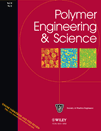
POLYMER ENGINEERING AND SCIENCE
Shaping the Future of Polymer EngineeringPOLYMER ENGINEERING AND SCIENCE, published by WILEY, is a premier journal specializing in the field of polymer science and engineering. Since its inception in 1961, this journal has been at the forefront of disseminating high-quality research, focusing on various aspects of polymers and plastics, including their chemistry, properties, and applications. With an impressive impact factor, it ranks in the second quartile (Q2) across multiple categories, including Chemistry (Miscellaneous), Materials Chemistry, and Polymers and Plastics, showcasing the journal's significance and influence in these vital areas of research. Researchers and professionals in academia and industry will find the latest advancements and innovative methodologies in polymer science, making this journal an essential resource for those looking to stay updated on cutting-edge developments. While it does not currently support Open Access, its comprehensive scope and critical insights positioned it as a valuable platform for advancing knowledge and fostering collaboration within the polymer community. The journal’s office is located at 111 River St, Hoboken 07030-5774, NJ, United States, emphasizing its strong presence in the academic landscape.

Materials Advances
Shaping Tomorrow's Materials TodayMaterials Advances, published by the Royal Society of Chemistry, serves as a premier open-access journal dedicated to the dynamic field of materials science and chemistry. Since its inception in 2020, the journal has quickly gained recognition, achieving an impressive Q1 ranking in both the Chemistry (miscellaneous) and Materials Science (miscellaneous) categories as of 2023. With an impact factor reflective of its high academic standards, it ranks #18 out of 111 in Chemistry and #107 out of 463 in General Materials Science per Scopus metrics. The journal welcomes research articles that explore innovative materials, advanced synthesis techniques, and novel applications, thereby contributing to the ongoing dialogue in materials research. Operating under an open access model, Materials Advances ensures that groundbreaking research is freely available to a global audience, facilitating collaboration and advancements in science. With its headquarters in Cambridge, England, this journal is positioned at the forefront of technological research and discovery, making it a vital resource for researchers, professionals, and students alike.

Inorganic Materials-Applied Research
Advancing the Frontiers of Inorganic InnovationInorganic Materials-Applied Research is a pivotal journal dedicated to the dissemination of innovative research in the field of inorganic materials. Published by SpringerNature, this journal operates as a vital resource for researchers, professionals, and students alike, providing a platform for cutting-edge findings and methodologies related to the synthesis, characterization, and application of inorganic materials. With an ISSN of 2075-1133 and an E-ISSN of 2075-115X, the journal strives to bridge gaps in interdisciplinary studies, fostering collaboration across the engineering and materials science domains. Despite its current rankings placing it in the Q3 quartile for both Engineering and Materials Science categories, the journal aims for broader impact, seeking to enhance its visibility and contribution in publications through rigorous peer-review and open access options. Converged from 2010 to 2024, it remains committed to advancing knowledge and addressing contemporary challenges in materials science, thereby attracting contributions that are not only academically rigorous but also socially impactful.
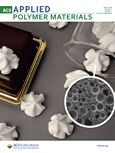
ACS Applied Polymer Materials
Unveiling Breakthroughs in Material ScienceACS Applied Polymer Materials is a prestigious journal published by the American Chemical Society, specifically tailored for the dynamic fields of Organic Chemistry, Polymers and Plastics, and Process Chemistry and Technology. With its ISSN 2637-6105, the journal has rapidly established itself within the academic community, achieving a distinguished Q1 quartile ranking across multiple categories in 2023. This places it among the top-tier journals globally, reinforcing its critical role in disseminating groundbreaking research and innovation in polymer science. The journal is known for its rigorous peer-review process and publishes high-quality articles that are pivotal for researchers, professionals, and students eager to advance knowledge in polymer materials and their applications. Positioned to cover converging themes from 2019 through 2024, ACS Applied Polymer Materials embraces a wide scope of studies, from fundamental chemistry to practical engineering applications, thereby fostering significant advancements in material science. While it offers traditional access options, the journal's impact is reflected in its impressive rankings within Scopus, indicating its relevance and influence in the chemical engineering domain. Join the global community of innovators and discover the latest insights that continue to shape the landscape of applied polymer research.

Express Polymer Letters
Exploring the Frontiers of Polymer KnowledgeExpress Polymer Letters is a leading open-access journal published by BUDAPEST UNIVERSITY OF TECHNOLOGY AND ECONOMICS, focusing on the fast-paced realm of polymer science and engineering. With a broad scope that encompasses the interdisciplinary fields of Chemical Engineering, Materials Chemistry, and Organic Chemistry, the journal serves as a crucial platform for researchers and professionals dedicated to advancing knowledge and innovation in polymer-related disciplines. Since its inception in 2007, it has consistently provided high-quality, peer-reviewed research and has achieved a respectable impact within various categories, evidenced by its Q2 quartile rankings across multiple Scopus categories and its competitive standings in the field. The journal's dedication to open access ensures that research is widely disseminated, promoting transparency and collaboration within the academic community. Positioned to converge into the future, Express Polymer Letters remains an essential resource for cutting-edge studies and developments, with an anticipated convergence period extending through 2024.
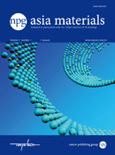
NPG Asia Materials
Exploring Innovative Pathways in Material ResearchNPG Asia Materials, a premier journal published by NATURE PORTFOLIO, stands at the forefront of research in the fields of condensed matter physics, materials science, and modeling and simulation. With an impressive Impact Factor gracing its Q1 rankings in 2023, this open-access journal, established in 2012, offers a vital platform for disseminating high-quality research articles, reviews, and perspectives that advance the understanding of material properties and innovative applications. Based in the United States and catering to a global audience, NPG Asia Materials features cutting-edge contributions that not only enhance academic scholarship but also provoke discussions relevant to both industry and academia. Researchers, professionals, and students are invited to explore its extensive archive of work, covering insights from 2009 to 2024, in a bid to stay abreast of the latest developments in these rapidly evolving scientific domains.
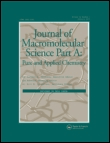
Journal of Macromolecular Science Part A-Pure and Applied Chemistry
Bridging Theory and Application in Macromolecular ScienceWelcome to the Journal of Macromolecular Science Part A - Pure and Applied Chemistry, a distinguished publication dedicated to advancing the understanding of macromolecular science, encompassing critical areas such as polymers, materials chemistry, and composites. Published by Taylor & Francis Inc, this journal has firmly established its place within the scientific community, evident from its ranking in the Q2 and Q3 quartiles across various categories in the latest assessments, including Polymers and Plastics as well as Ceramics and Composites. With a commitment to providing high-quality peer-reviewed content, the journal aims to facilitate knowledge exchange and innovation among researchers and practitioners from around the globe. The absence of open access underscores the journal's commitment to maintaining rigorous editorial standards while remaining accessible to its readership. As the journal converges through valuable research contributions from 1992 to 2024, it continues to be a pivotal resource for professionals and students seeking to explore the latest advancements and applications in the field of macromolecular science.